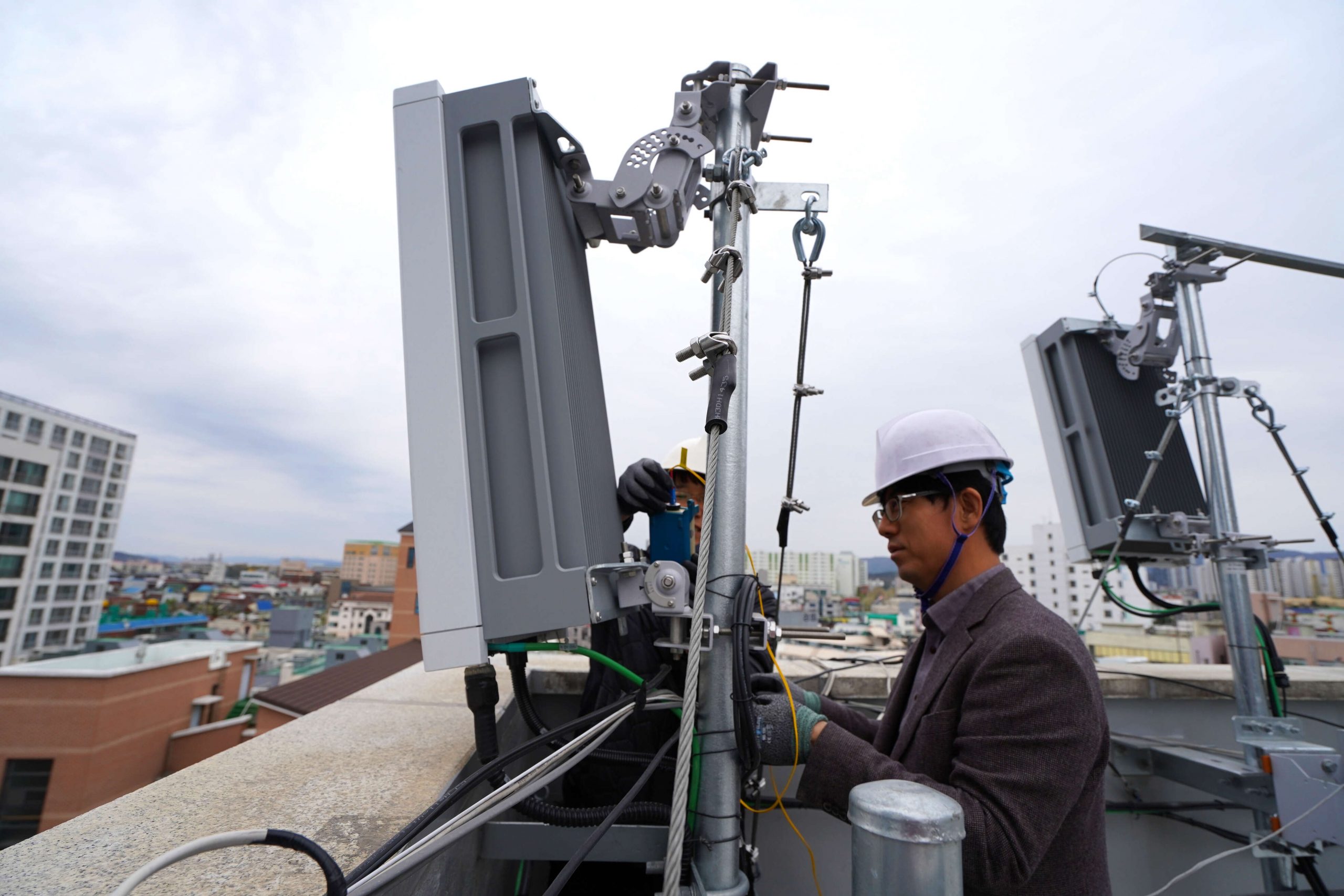Can 5G be green? Taking a look at it from a sustainability perspective. (Picture: Pixabay)
Without a doubt, 5G is driving technological and industrial advancements – but how will it affect our environment? Is the upcoming 5G era helping to shape a more sustainable future? Or is it proving to be counterproductive in the global quest for a greener future? Concrete answers to these questions are proving difficult. What does help, however, is to weigh up the pros and cons of 5G technology – from a sustainability perspective. Read Part 1 here on the benefits of 5G.
Shristi Mangal Pal (Freelance journalist)
The upcoming 5G revolution promises internet surfing speeds up to 20 times faster than today’s broadband networks. Along with low latency, superior connectivity and higher capacity, 5G is the first mobile technology that can extend wireless broadband services to connected devices. Thanks to this innovative way of using the radio spectrum, significantly more devices can access the mobile internet in one go. From the perspective of our ever-expanding web-based world, this is nothing short of music to the ears – especially for industries in the areas of virtual reality (VR), IoT (Internet of Things) and AI (artificial intelligence). Here are seven arguments in favour of the use of 5G from the viewpoint of sustainability:
1. 5G to be a harbinger of sustainable economic growth opportunities.
Climate change is a global social, economic and environmental issue that requires rapid and targeted action. Qualcomm, an American multinational company that develops semiconductors, software and services in wireless technology, recently published a report on the transformative role of 5G. According to the report, 5G can help sustainable development! Qualcomm points out that 5G could create more than 300,000 new green jobs in the US and other parts of the world.
2. It is projected that CO2 gas emissions will be reduced and resources conserved
Qualcomm’s 2021 report also provides us with some astounding statistics. 5G’s ultra-low latency and extreme reliability will enable us to deliver several innovative services. Services will monitor water usage in real-time, helping to save 410 billion gallons of water per year. It is also predicted to reduce greenhouse gas emissions by more than 370 million tonnes by 2025. In addition, the report’s authors expect a 50 per cent reduction in pesticide use, as well as an overall optimization of energy consumption and improved fuel efficiency.
3. SMART solutions for industries
Through smart solutions tailored to both urban and rural needs, 5G will create sustainable solutions for the industrial sector. First, 5G will help provide highly efficient remote workplaces, reducing unnecessary travel. Likewise, 5G will enable the transmission of large medical images, facilitate telemedicine initiatives, support remote patient monitoring tools and enable more complex applications of AI/VR/AR, reducing travel for medical staff and patients.
4. Making green and eco-friendly cities a reality.
The Qualcomm report shows how 5G could meet our ever-growing need for green infrastructure. By supporting the use of smart sensors and smart edge devices, 5G will improve the automation of building management systems, smart meters, HVAC (heating, ventilation and air conditioning) control systems and increased consumption awareness through continuous monitoring. All this means that 5G could help us further improve our smart infrastructure expertise and promote green urban spaces.
5. Sustainability in mass production
The guidelines of the UN Climate Change Conference held in the UK this year set out an urgent need for action in the area of mass production. Here, 5G could provide a level of secure connectivity with ultra-low latency, making accuracy and precision in the automated movement for synchronization and control much more responsive – something that has been limited until now. SMART (Self Monitoring Analysis and Reporting Technology) manufacturers can use 5G-enabled technologies to gain insights and improve productivity and efficiency. For example, inventory management systems supported by 5G reduce the overall amount of inventory required. As a result, less warehouse space is needed, which reduces energy requirements for lighting and cooling.
6 Sustainable agricultural solutions
Agricultural scientists and farmers are working to develop more sustainable ways of feeding our booming population. The adoption of 5G technology and its implementation in food production and distribution could reveal new environmentally friendly ways to optimize crop yields, conserve water, improve soil health and monitor livestock. 5G-enabled applications will be instrumental in reducing the agricultural sector’s impact on climate change while addressing future food and fresh water scarcity issues. Potentially, this will bring us a step closer to solving world hunger.
7. More efficient power distribution and better availability of renewable energy
Reducing global consumption of non-renewable energy is a constant struggle for humanity. Smart grids will transform the energy sector by increasing the efficiency of electricity distribution and the availability of renewable energy. The use of 5G technology here enables accurate monitoring of the entire grid via sensors/IoT devices and provides the flexibility to address fluctuating needs. By using real-time information and advanced analytics in the bidirectional network, 5G supports better responsiveness to meet such demands and mitigate the risk of blackouts and brownouts.
Engineers also claim that the small cells that provide the 5G connection are energy-efficient and sustainably powered. Given the high maintenance and production costs for these cells, supporters of the 5G network advocate that the small cells be powered by solar or wind energy to be sustainable and environmentally friendly. A 2007 report on building energy consumption published by ScienceDirect: Energy and Buildings states that these devices, called “fuel-cell energy servers”, will serve as clean energy generators for the small cells.
Is all that glitters, really “Green”?
The introduction of base stations powered by sustainable energy would be a step in the right direction to protect the environment. But are these promises enough to meet the energy needs of running 5G devices? Have the tech giants been transparent about all the implications of 5G technology, or have some negative aspects been swept under the carpet? Let’s take a look at some of the potential downsides of 5G. Read the second part of the article on the problems of 5G technology from a sustainability perspective shortly.









Leave A Comment